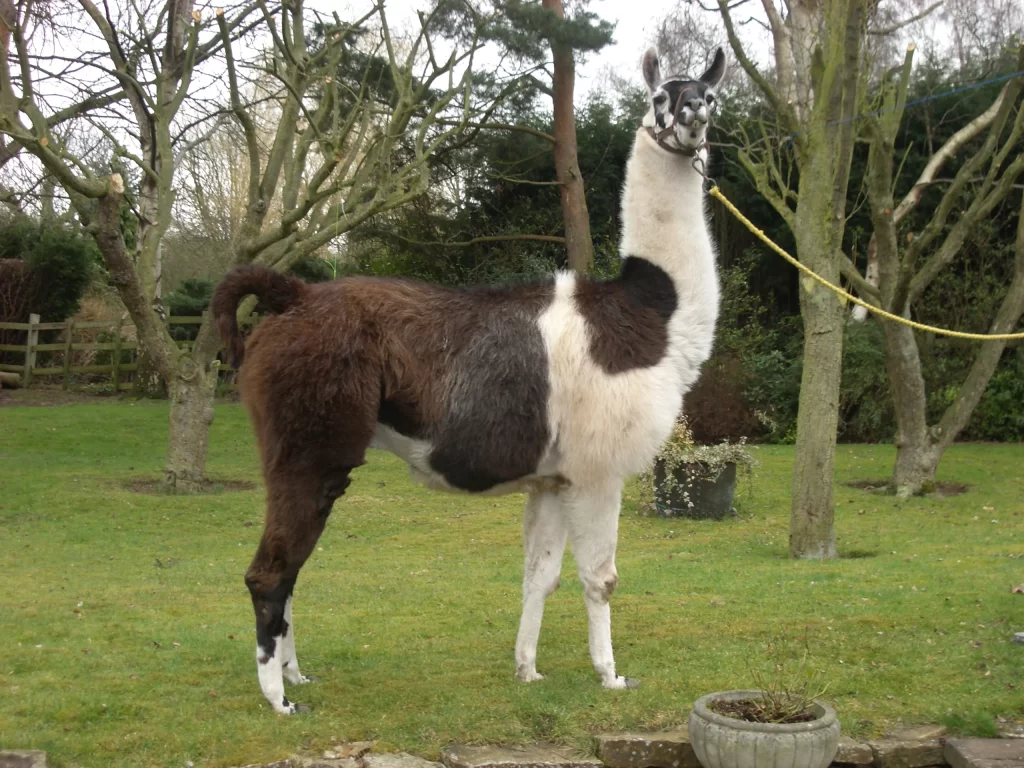In their native countries llamas are bred for work and thus conformation is very important. In our situation here in the UK, good conformation will help your llama have a long life of soundness. Figure 1 shows a diagram of a llama with a good overall conformation and showing names of the various parts of the animal.
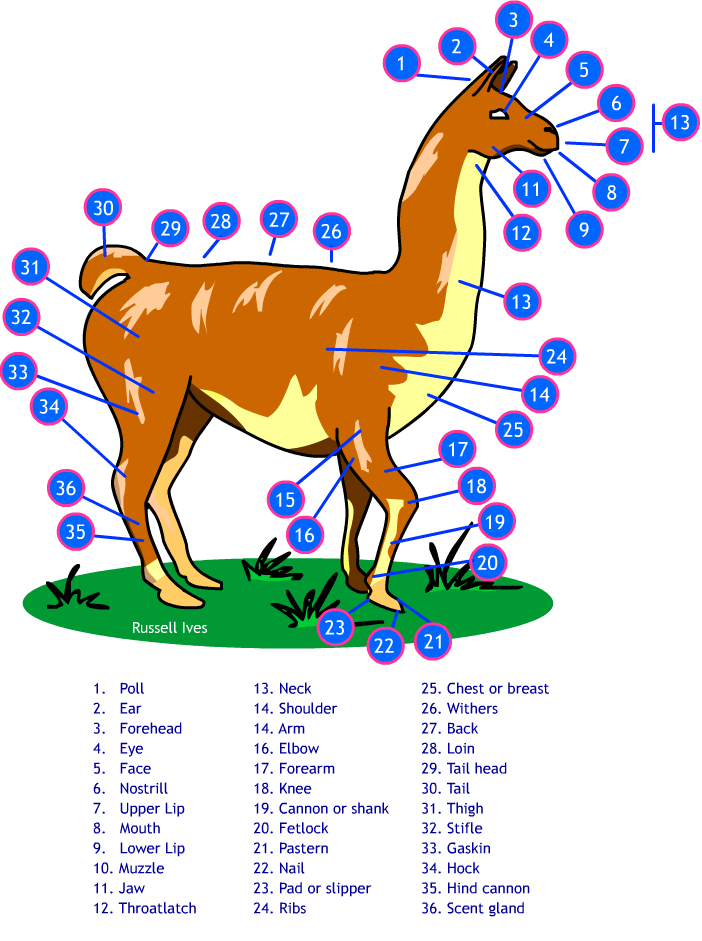
The first thing to look for is balance between different parts, i.e. the length of the neck in proportion to the length of the back and legs.
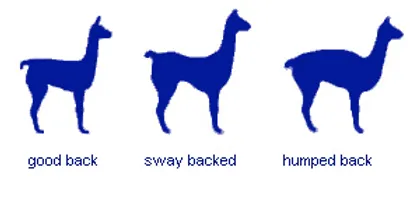
The back supports all the internal organs and has to carry the work load. A straight, strong back is very important. Now let’s look at the back:
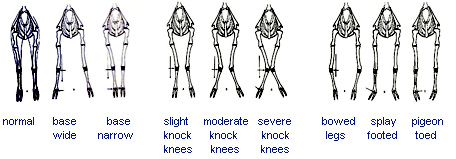
Next look at the legs.
Now observe the llama’s legs from the side.
Front Legs:
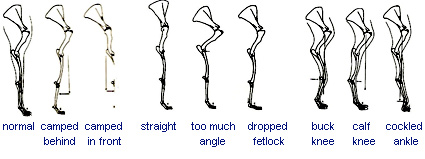
The feet and fetlocks (ankles) support the entire weight of the body. The foot should face forward or slightly outward. Excess rotation either way causes stress in the legs. If fetlock is not correct, the foot loses its spring action, weakening the joint and often causing lameness.
Rear Legs:


Finally, but not least important, check the jaw alignment. This will be a factor in the nutritional health of the llama throughout its life.
Finally one must accept that no animal is perfect and that most will have ‘defects’ of one type or another but will lead normal and healthy lives.
Clearly this is just a simple guide to conformation and other more in depth papers are available on the topic. This guide has drawn heavily on a paper by Professor Murray E. Fowler DVM with many of the diagrams reproduced here being taken from his paper and the British Llama Society would like to both acknowledge the source and thank Professor Fowler for his permission to publish them.
Ref: Form, Function, Conformation and Soundness, by Professor Murray E. Fowler, DVM, Published in Llamas, The International Camelid Journal, September/October 1995
